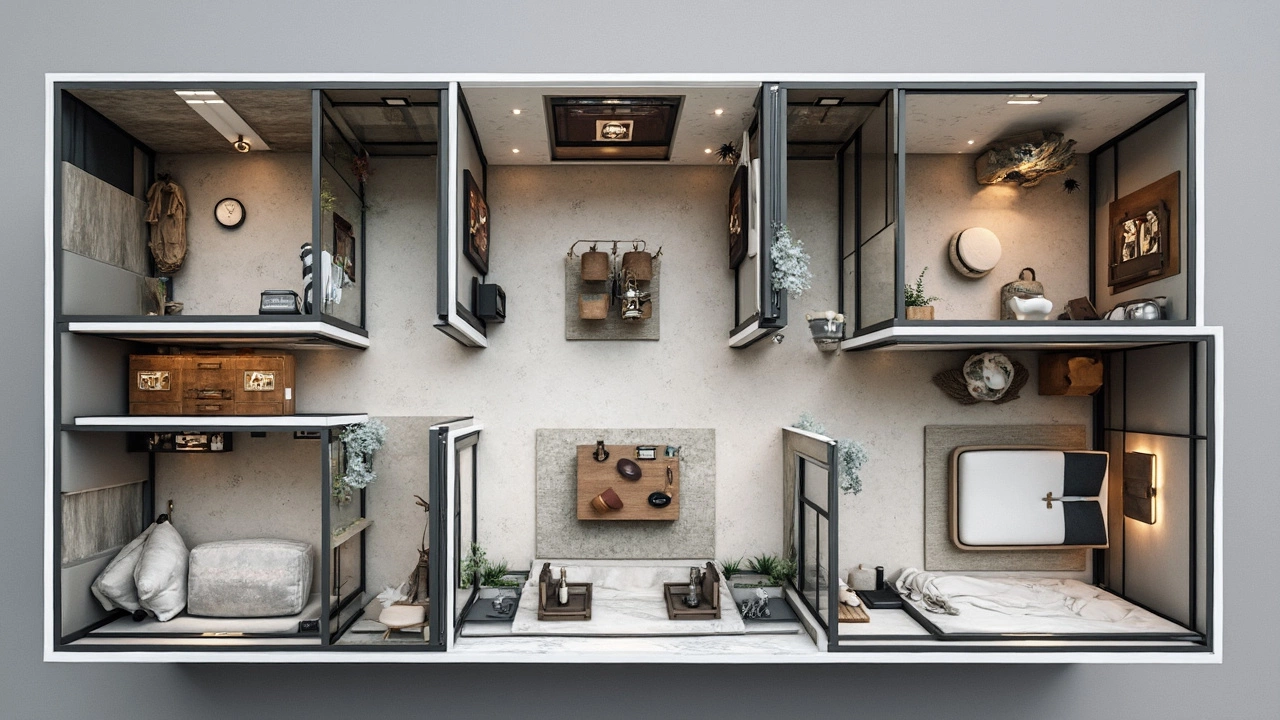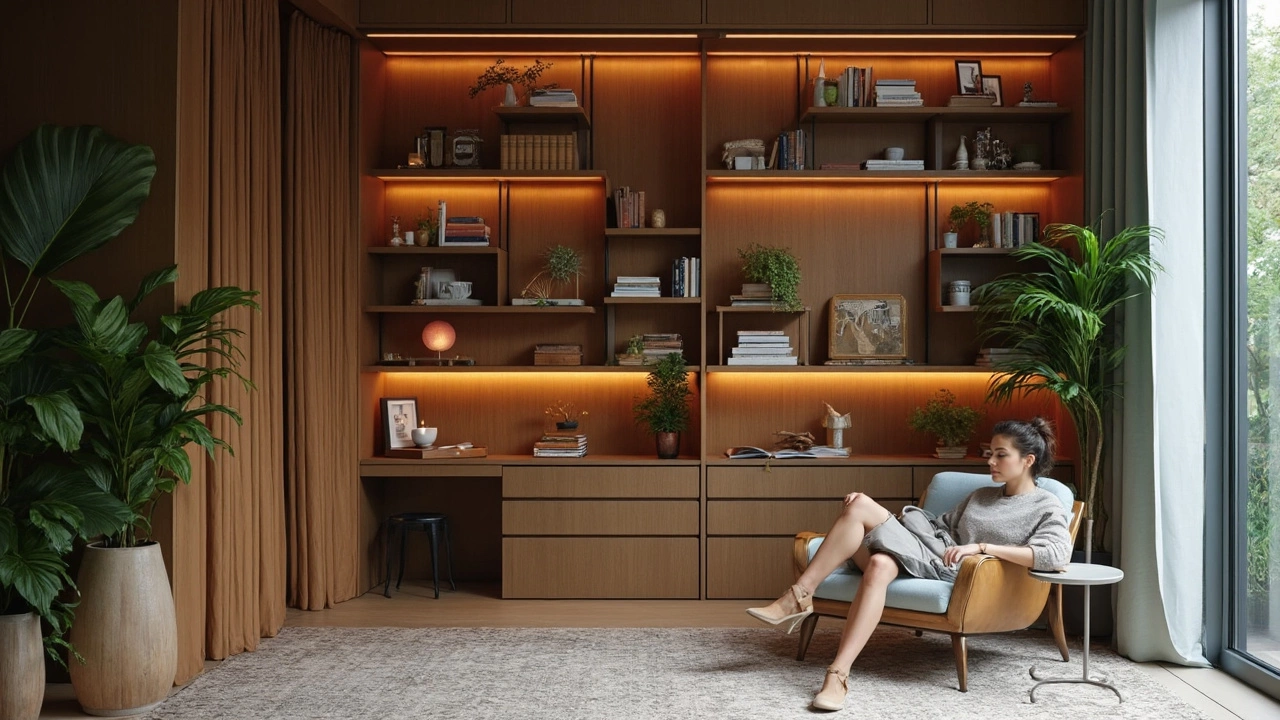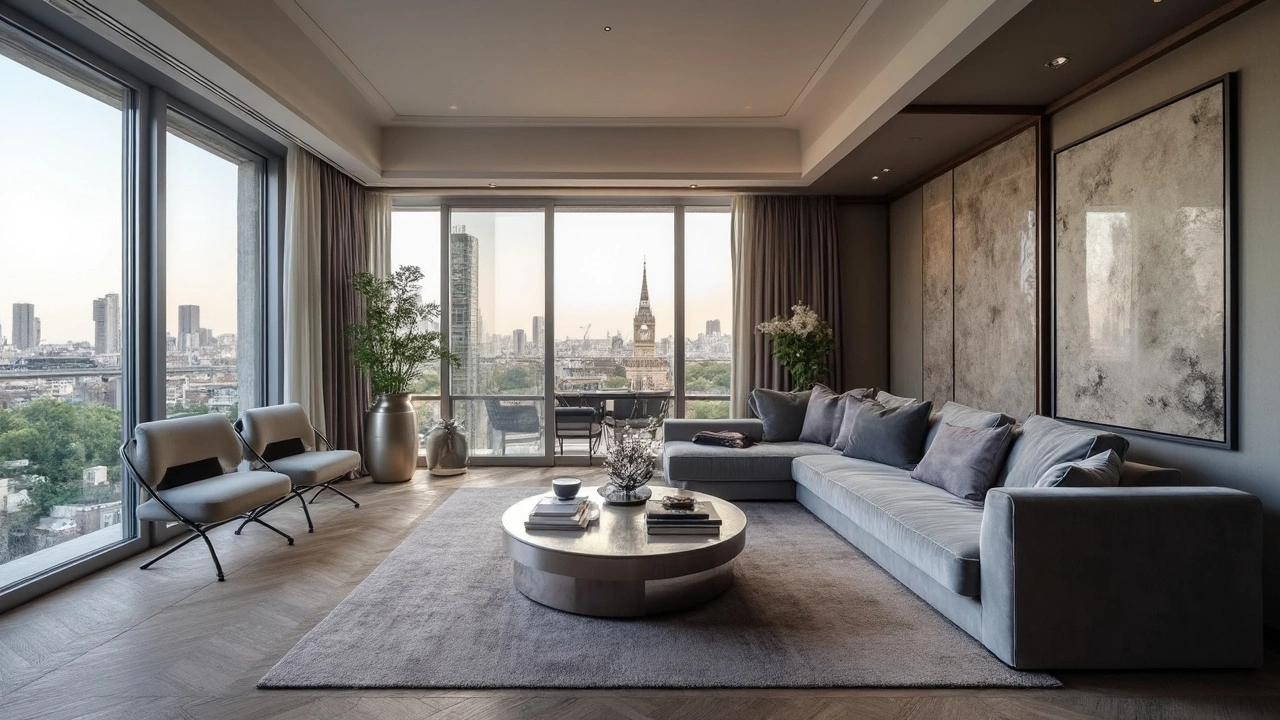Ever walked into an apartment and thought, “Whoa, this is next level”? Space plays a massive part in that reaction. But what actually counts as ‘big’ when we’re talking about a luxury apartment? The answer isn’t just about having room to swing a cat—there’s a big difference between a place that feels roomy and another that makes you want to host a Gatsby-style bash. Dig into any real estate listing in Manhattan, Singapore, or Dubai and the range of “luxury” square footage will surprise you. Now, let’s cut through the hype, weird builder lingo, and wild property ads to uncover exactly how big a luxury apartment is—and what really matters besides just raw numbers.
What Makes an Apartment ‘Luxury’? Space Isn’t Everything
Start with the basics: what does “luxury apartment” even mean? If you’re instantly picturing sprawling penthouses and panoramic floor-to-ceiling windows, you’re close, but there’s more to the story. Luxury goes way beyond just being large. To even qualify for the title these days, an apartment has to nail many details: smart layouts, premium finishes, and amenities that make everyday life feel a little more like a vacation. But size—especially square footage—still plays a starring role.
The term “luxury” gets thrown around a lot. In real estate circles, developers sometimes slap the word on nearly anything with stainless appliances or a rooftop grill. But true luxury means more than that. Industry insiders pin luxury apartments as those located in prime city spots, boasting the kind of features you won’t find in a regular high-rise. Think advanced security, dedicated concierge, private gyms, rooftop gardens, infinity pools, and spa-style bathrooms. These comforts demand space—not just inside the unit, but with expansive shared amenities as well.
What about ceiling height? It’s worth mentioning because nothing shrinks a room faster than low ceilings. In elite buildings, expect 10 to 12-foot ceilings minimum. Some even toss in dramatic double-height living rooms or galleries. Glass walls, big balconies, and thoughtful soundproofing add to the feel of abundance. Smart home tech—integrated sound, lighting, and climate controls—make a home truly feel next-gen. So size matters, but what you do with that size is what truly makes the space feel luxury.
Luxury Apartment Size: Real Numbers from Real Cities
Let’s get specific. How big is a luxury apartment, really? It varies wildly based on location. In New York City, for example, your typical high-end two-bedroom rental clocks in at 1,200 to 1,700 square feet, but the top-tier places can go up to 3,000 square feet for three or four bedrooms. Some eye-popping penthouses even hit 6,000 square feet or more. Dubai and Singapore love to outdo each other, with luxury condos here easily reaching 2,000 to 5,000 square feet for standard residences and super-luxurious penthouses stretching past 10,000 square feet.
Take a look at this side-by-side of common luxury apartment sizes from a 2024 international housing report:
| City | Average Luxury 2-Bedroom (sq ft) | Typical Luxury Penthouse (sq ft) |
|---|---|---|
| New York | 1,400 | 5,000+ |
| London | 1,200 | 4,500+ |
| Dubai | 2,000 | 7,500+ |
| Singapore | 1,800 | 6,500+ |
| Hong Kong | 1,100 | 3,500+ |
The numbers never tell the whole story. In super-pricey cities like Hong Kong, a 1,000-square-foot apartment may carry a bigger price tag than a 3,000-square-foot spread in Miami. What matters, often, is how well that space is used and the luxuries on offer. The rule of thumb among real estate pros: luxury apartments typically offer 20-50% more space per room than the average apartment in the same city.

Space, Layout, and How You Actually Use it
Square footage by itself can be misleading. Ever been in a technically “large” place that felt cramped? That usually comes down to layout. True luxury apartments are more than just big—they’re cleverly designed. That means open-concept kitchens that flow right into living rooms, flexible “bonus rooms” that work as an office, gym, or extra bedroom, and strategically placed storage that makes clutter disappear.
Consider a typical 2-bedroom luxury apartment in New York: The kitchen is open, with a big island for eating and hosting. Living and dining areas are connected, often with huge windows filling everything with natural light. Bedrooms are isolated from the entertainment zone, so you get peace and privacy. Closets and storage aren’t tucked away in some odd corner—they’re built in, organized, and customized. And don’t forget the extra “flex room” that could be a nursery, office, reading nook, or art studio—useful space is valuable space.
Smart layouts also maximize that sense of openness. The best architects plan for sightlines—when you walk in, you can see out to the balcony or window instead of staring at a wall. Sliding doors, glass partitions, or hidden mechanical walls can create private zones without chopping up the main living area. Even utility rooms like laundry, pantries, and mechanicals are hidden but functional.
One classic trick: keep living spaces and bedrooms on opposite sides of the unit. It’s both practical for noise and gives a “winged” effect that makes an apartment feel like a mini-house. It’s not just about size. The right layout can make a 1,200-square-foot apartment feel more expansive than a 1,600-square-foot unit designed poorly. That’s where an experienced architect earns every dollar.
Luxury Features That Make Square Footage Feel Bigger
Here’s where things get fun. Adding more space isn’t the only path to that luxury feeling—savvy design moves can make an apartment of any size feel truly impressive. The right combination of tech, finishes, and creative details can boost the perceived size and enjoyment of a space.
- Floor-to-ceiling windows: These do wonders—flooding rooms with light and making boundaries disappear. Even a modest living room feels endless with a sprawling city or water view.
- Built-in smart systems: From automated blinds and custom lighting scenes to voice-activated everything, smart tech keeps things sleek and uncluttered, while reducing the need for extra furniture or wall switches.
- Premium finishes: Wide plank hardwood flooring, marble islands, custom cabinetry, and designer appliances—not only do these look incredible, but they add an intangible sense of quality and luxury. Small-space renters take note: you don’t need 3,000 square feet to rock waterfall marble countertops.
- Custom lighting: Thoughtful lighting can highlight art, create mood zones, and help separate spaces without walls. Dimmable systems and statement fixtures level up the wow factor without requiring a single extra inch.
- Private outdoor space: Even a 50-square-foot balcony, if designed cleverly, can make a mid-sized apartment feel twice as big—especially if you can slide open a whole wall of windows.
- Flexible rooms and built-in storage solutions: Think Murphy beds, convertible desks, and bookshelf walls with hidden compartments—these all multiply usable space and banish clutter.
- Soundproofing: True luxury apartments don’t echo with city noise. Triple-glazed windows, padded floors, and insulated walls transform urban living into a quiet refuge.
Developers have tracked rising demand for these features, especially as remote work becomes the norm. Surveys from leading brokers in 2024 showed almost 70% of high-end buyers put more importance on layout and amenities than raw square footage. For those who value a sense of space, it’s not always about adding square feet, but about using every inch well, inside and out.

Tips for Picking the Right-Sized Luxury Apartment
Finding your dream apartment shouldn’t feel like a numbers game, but a little math comes in handy. Here’s a checklist for choosing the luxury space that fits your life instead of just aiming for the highest number:
- luxury apartment size standards: In the U.S., top-tier two-bedroom units usually fall between 1,200 and 2,000 square feet. For three bedrooms, expect 1,800 to 3,000; for penthouses, sky’s the limit—and so is the price tag.
- Lifestyle fit: Are you working from home most days? Need space for a Peloton, art studio, or moody reading nook? Always hosting big family gatherings? Make a list of how you actually use your space and prioritize accordingly.
- Don’t be fooled by staged furniture: Check ceiling height, window placement, and walk the space yourself. Pictures and virtual tours can stretch the truth.
- Ask about amenities: Is there private laundry? Does the gym fit more than a stationary bike? Is outdoor space practical?
- Pay attention to shared spaces: Rooftop pools, lounge areas, private movie theaters, even co-working spaces all add functional “living room” outside your actual apartment.
- Look at the price per square foot: Compare units within the same building or neighborhood—sometimes a “luxury” label just means higher rent, not more actual living space.
- Inspect storage: Walk-in closets, pantry space, and built-in shelves can make a mid-sized apartment feel downright huge.
- Try it out: If you’re serious, see if you can tour the apartment at night too. Spaces can look and feel very different when sun goes down and city lights come up.
Don’t let a dazzling lobby or rooftop fool you—it’s the combination of smart, livable space and those extra perks that make the difference between just a fancy apartment and a truly luxurious way to live. If you’re comparing two places with similar square footage, pay special attention to those little design details that add up to a daily dose of pleasure.


Corbin Fairweather
I am an expert in real estate focusing on property sales and rentals. I enjoy writing about the latest trends in the real estate market and sharing insights on how to make successful property investments. My passion lies in helping clients find their dream homes and navigating the complexities of real estate transactions. In my free time, I enjoy hiking and capturing the beauty of landscapes through photography.
view all postsWrite a comment